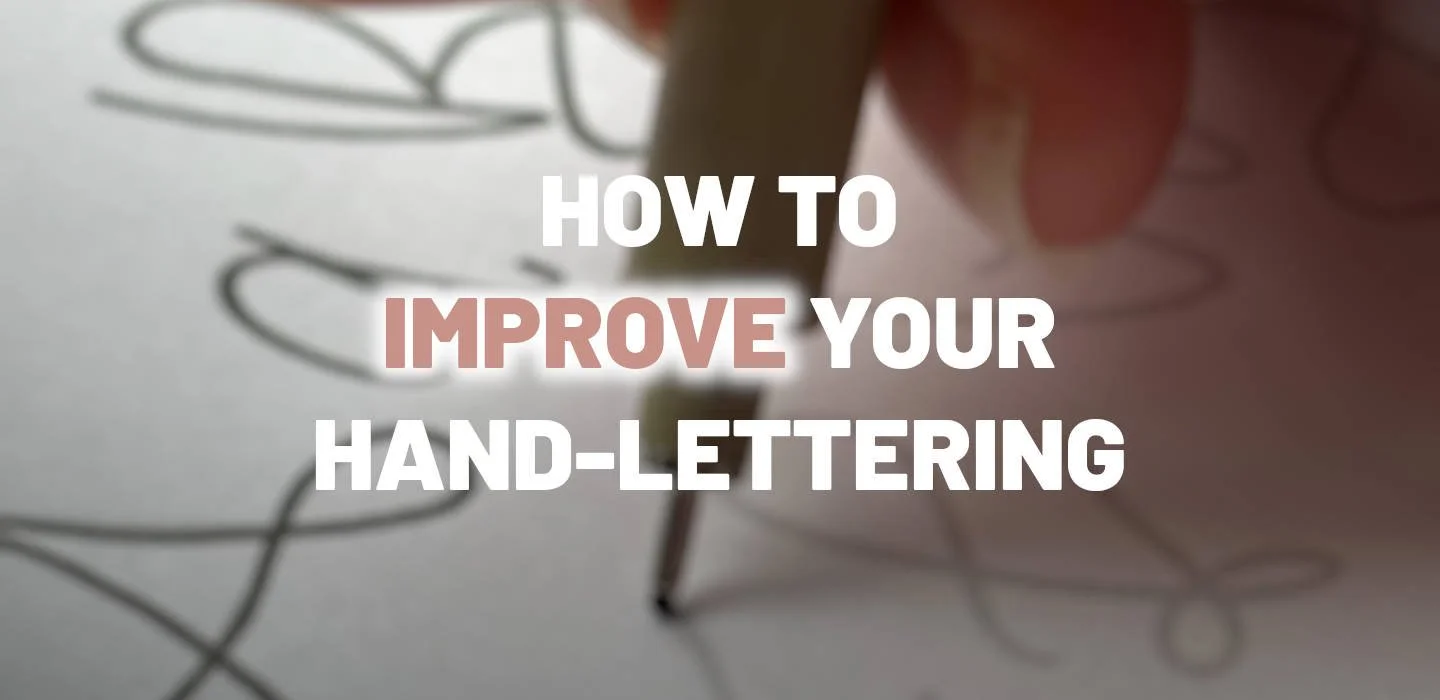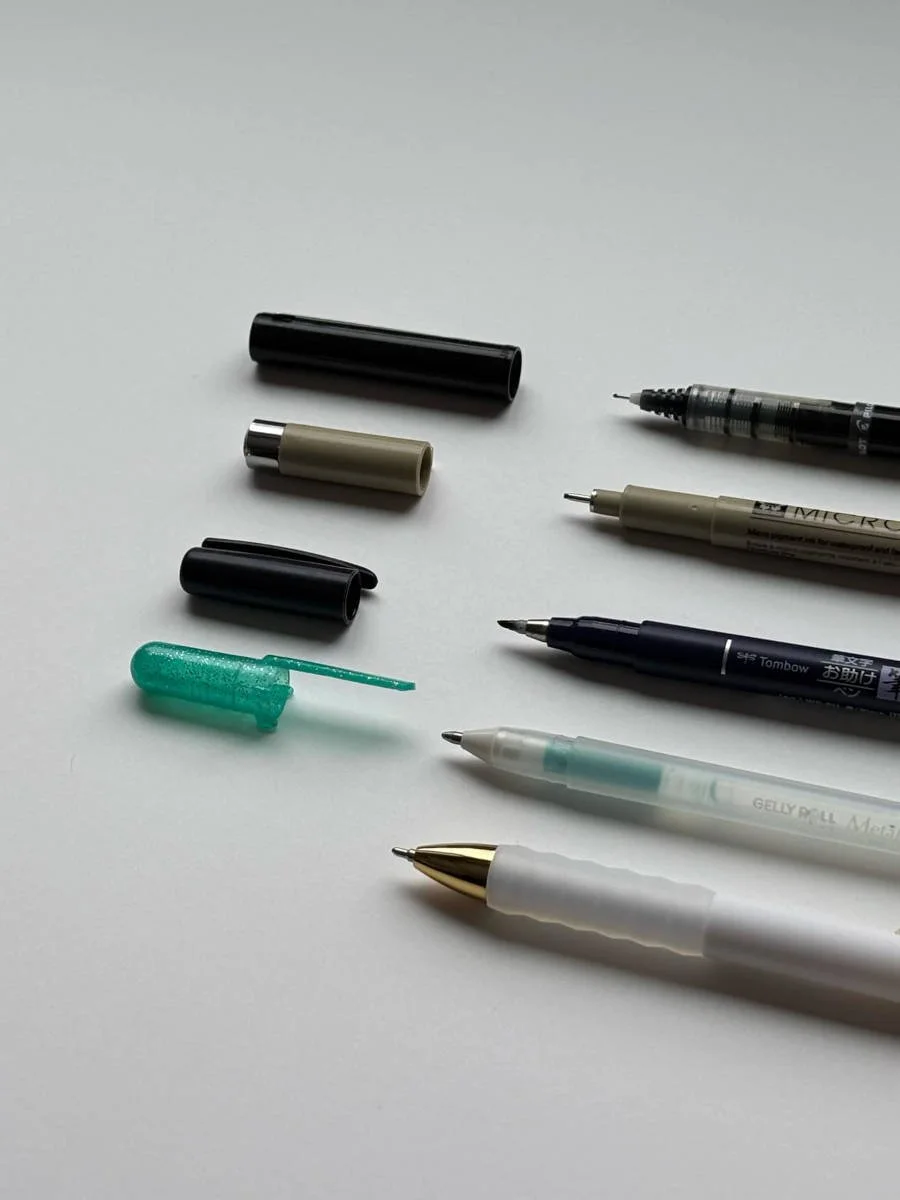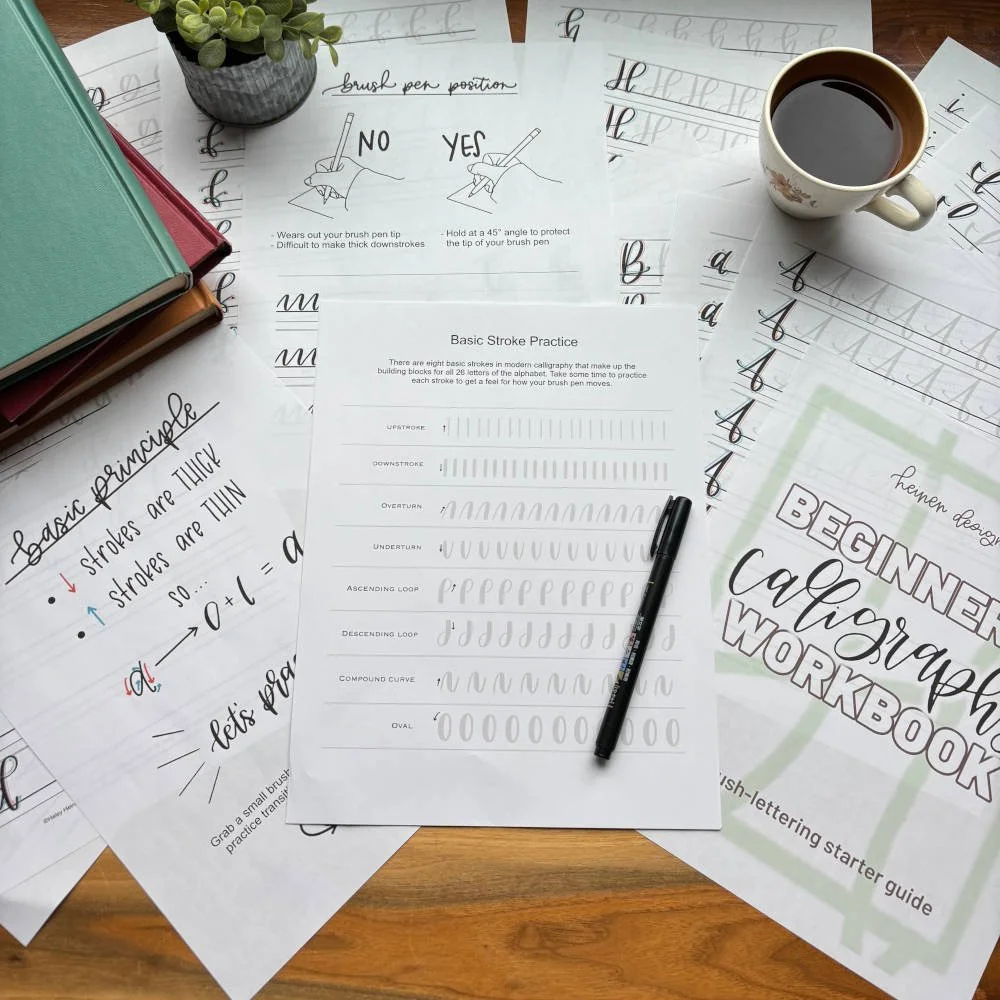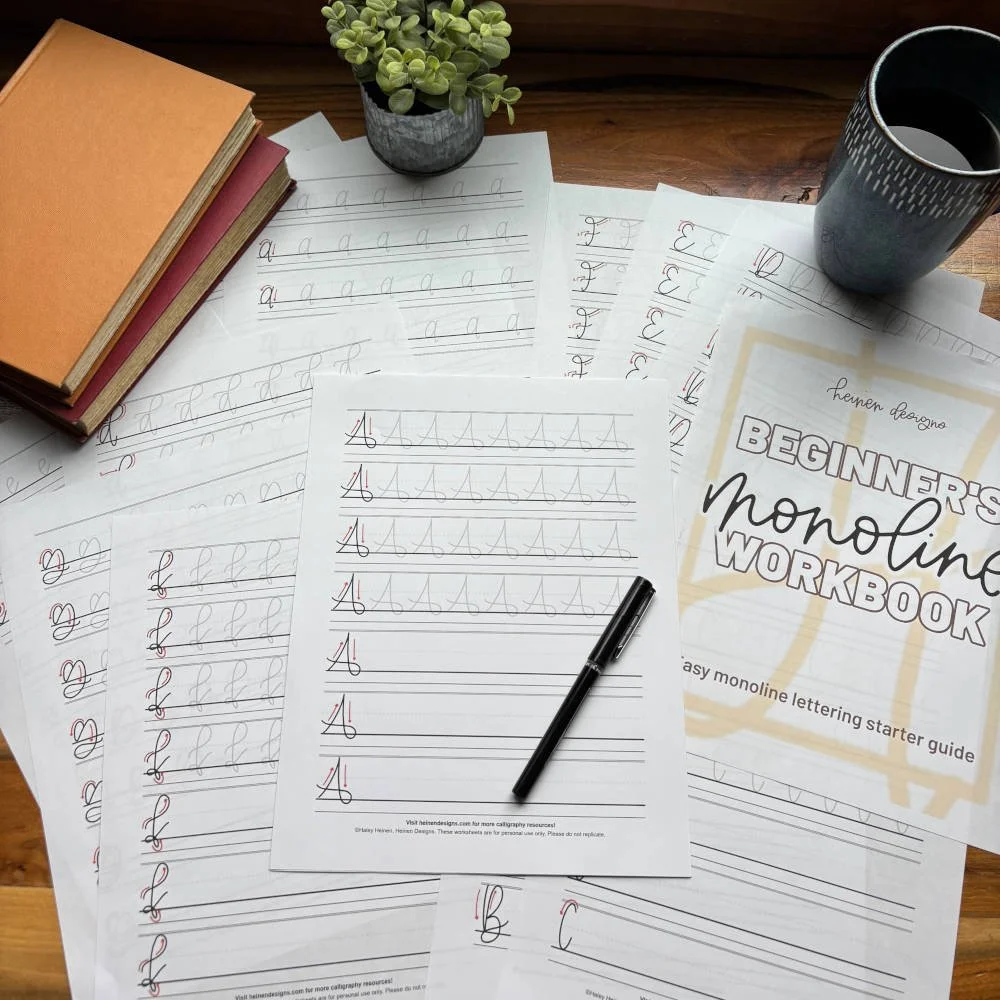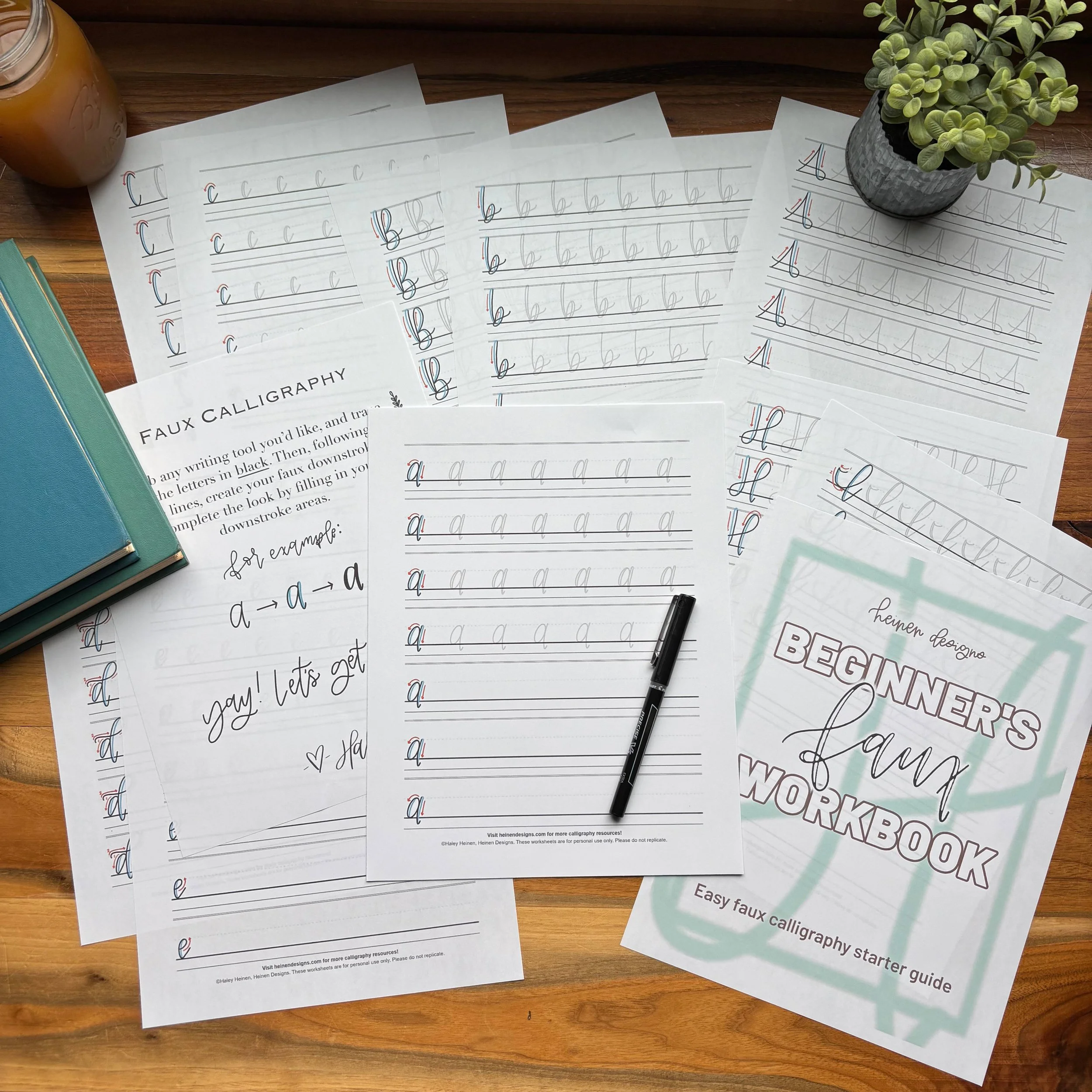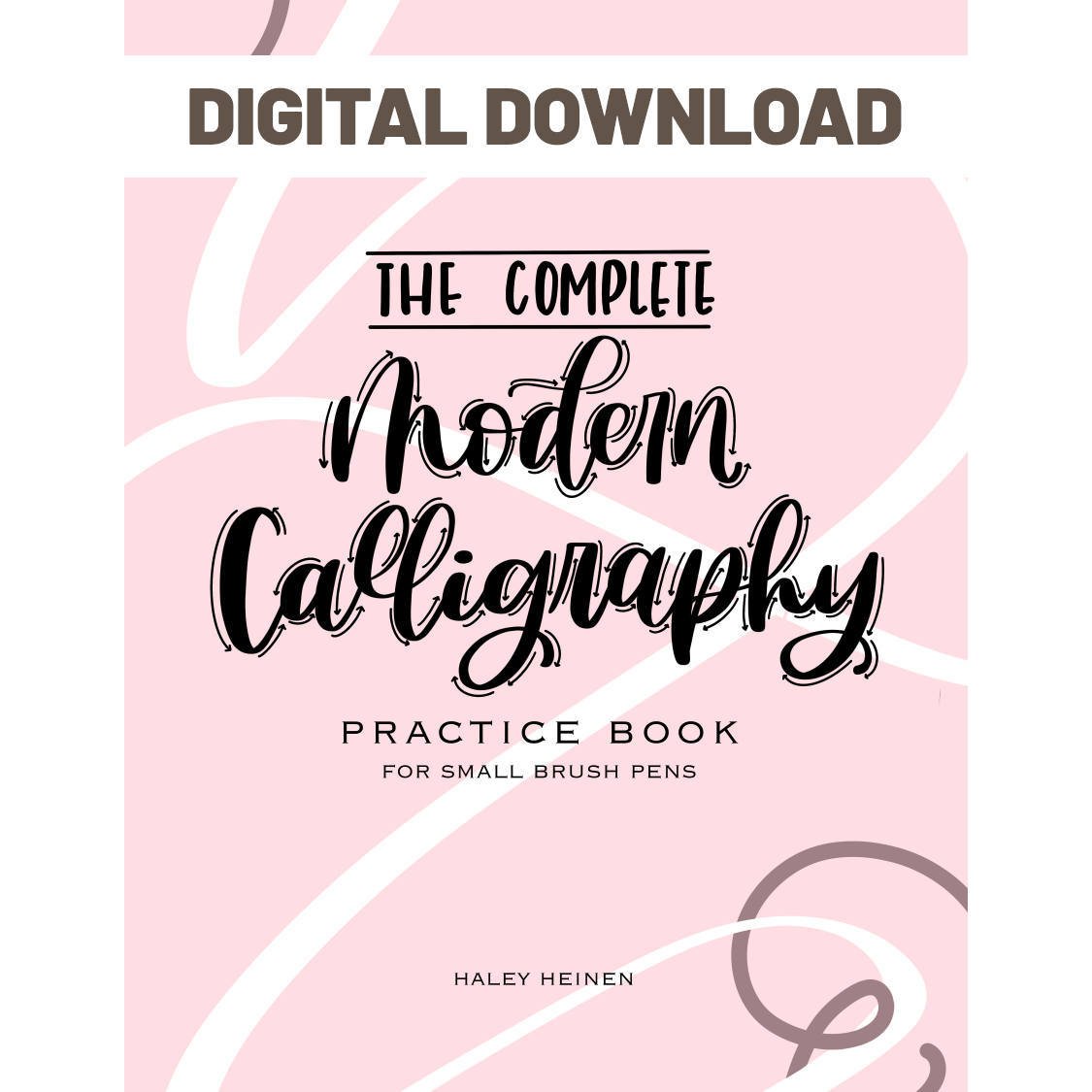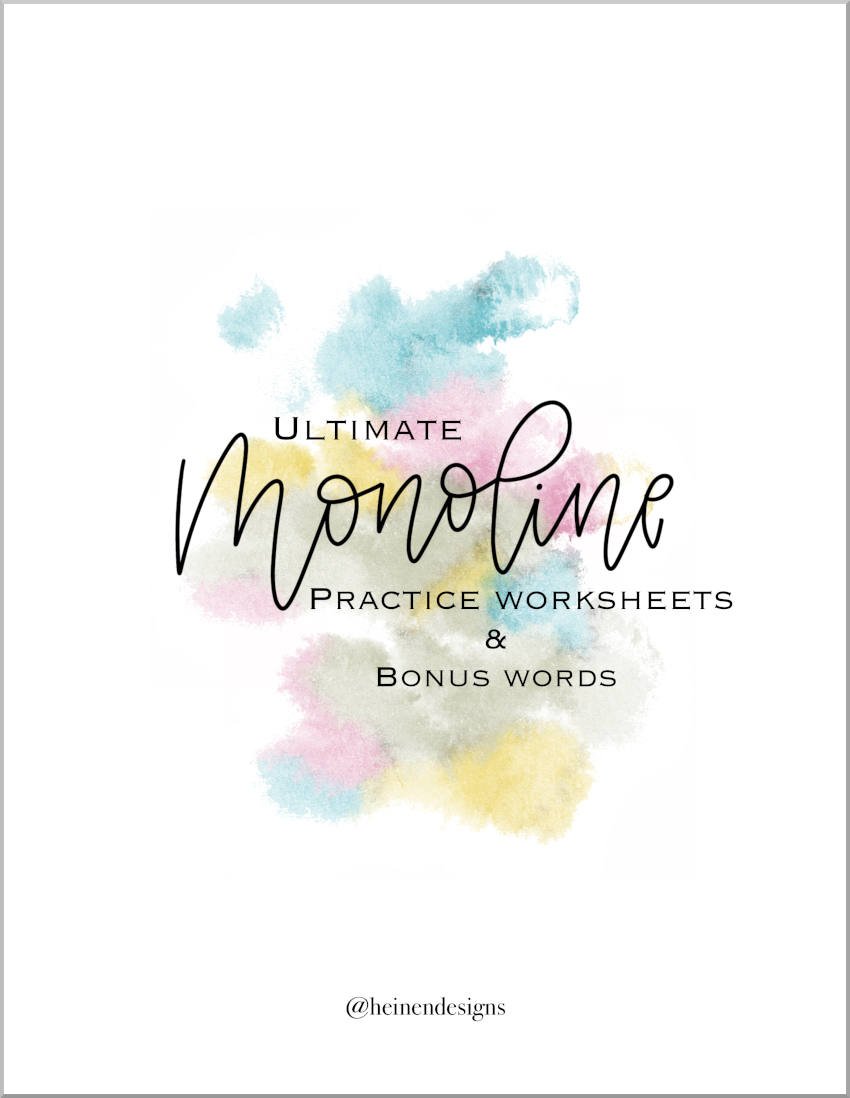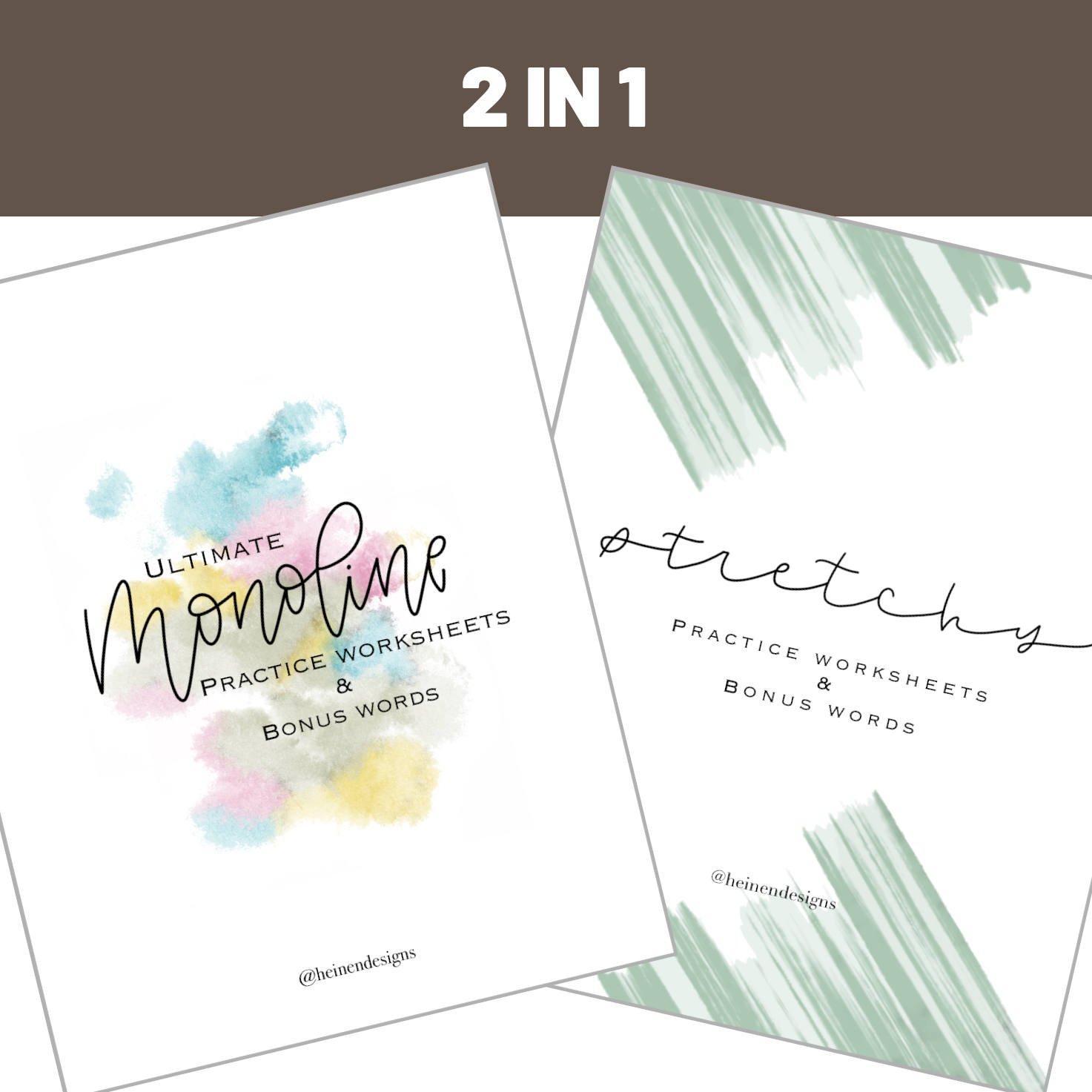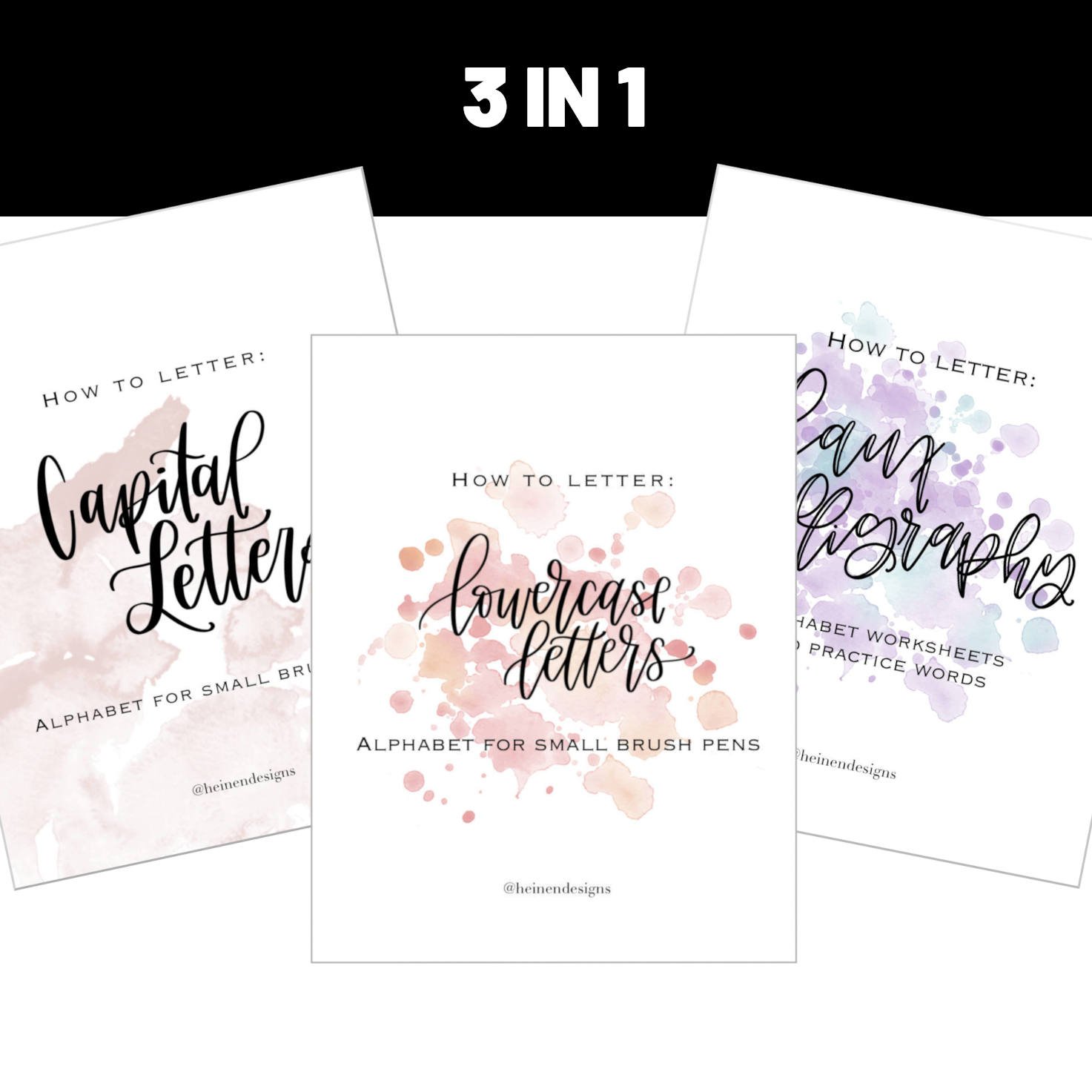10 Actionable Tips to Improve Your Hand-Lettering Skills
Hand-lettering is more than just beautiful writing. It’s a craft built through intention, repetition, and a whole lot of practice. While some people may seem like they’re “naturals,” even the most polished lettering artists started with shaky lines and uneven spacing.
Improving hand-lettering doesn’t require expensive tools or years of experience. It simply takes the right habits and a willingness to slow down, observe, and practice purposefully. Whether using brush pens or an iPad, these 10 practical tips will help sharpen your hand-lettering skills, improve consistency, and boost creative confidence.
Tap to jump to a topic:
1. Practice Basic Strokes Regularly
Every hand-lettered script is made up of just a few essential strokes, like upstrokes, downstrokes, underturns, overturns, and compound curves. Practicing these basic forms consistently builds muscle memory and pen control, which are critical to clean, confident lettering.
Before moving into full alphabets or phrases, it’s helpful to spend 5–10 minutes a day on foundational stroke drills. Even seasoned artists return to these drills as warm-ups to stay sharp.
2. Focus on Consistency over Style
While developing a personal lettering style is an exciting goal, it’s more important to first master consistency. That means focusing on things like uniform spacing, balanced sizing, and repetition of form across each letter.
Practicing consistency builds a solid foundation that allows for more confident experimentation later. Use lined or grid-based practice sheets to help with alignment, or draw light guidelines when working on blank pages to keep letters structured and even.
3. Slow Down the Writing Process
In hand-lettering, slower is smoother. Unlike handwriting, which relies on speed and habit, lettering is closer to drawing. Each stroke deserves attention. Writing too quickly often results in wobbly lines, uneven pressure, and missed connections between strokes.
Taking a slow, deliberate approach helps each letter take shape more naturally. Consider setting a timer, using background music, or treating each session as a mindful exercise to stay focused on quality over speed.
4. Use the Right Tools for the Technique
The tools used can make a significant difference in the quality of lettering practice. Rough paper can fray brush pen tips and cause ink to bleed, while overly soft pens might be too difficult to control for beginners.
Smooth, bleed-resistant paper paired with reliable beginner pens (such as the Tombow Fudenosuke or Pentel Touch) helps create clean strokes. Digital artists should use pressure-sensitive brushes and a stylus that mimics real pen control.
5. Break Down Each Letter into Strokes
Rather than thinking of letters as one continuous shape, treat each letter as a series of smaller, manageable strokes. This approach encourages precision and helps isolate problem areas when a letter doesn’t look quite right.
Trace letters slowly while paying attention to how the strokes connect. Practice writing letters stroke-by-stroke until the form becomes second nature. This habit builds deeper understanding of letter construction and spacing.
6. Repetition Builds Muscle Memory
Repetition is one of the most effective ways to improve both speed and consistency in lettering. Like learning an instrument, it takes time for the hand and eye to sync up. Repeating the same stroke, letter, or word multiple times allows for corrections, pattern recognition, and visible improvement.
Try focusing on a single lowercase alphabet style and repeating each letter 10–15 times in a row. Over time, subtle changes will start to appear. Lines will get smoother, spacing will even out, and confidence will grow.
7. Train with Words, Not Just Letters
While mastering the alphabet is essential, letters behave differently when used in actual words. Spacing, stroke transitions, and rhythm all shift when letters are connected in a sequence. Practicing full words provides a more realistic and useful way to refine lettering flow.
Start by practicing simple words that use letters already familiar, then gradually work up to longer phrases. Worksheets with pre-built word guides are especially helpful for building rhythm and consistency across connected letters.
8. Use Reference Guides & Grid Lines
Reference lines and guides serve as visual anchors that promote better alignment and proportion. Typography lines like the baseline, x-height, ascender, and descender lines offer a structured way to position strokes consistently.
When working traditionally, use guide sheets underneath transparent paper or print worksheets with guides built in. For digital lettering, use layered grids or rule-of-thirds templates to help maintain consistency from letter to letter.
9. Observe & Imitate Good Letterforms
One of the fastest ways to improve is by studying well-constructed letterforms. Observing how others build their strokes, use spacing, and shape letters offers valuable insights that can be applied during practice.
Choose a favorite lettering piece and try recreating it slowly. Focus on spacing, stroke width, and slant. The goal isn’t to copy forever, but to internalize patterns that can be used to develop original styles down the road.
10. Document Progress Over Time
Tracking progress is a powerful motivator. It's easy to feel stuck in the day-to-day, but noticeable growth happens over weeks and months.
Save early practice sheets, take progress photos, or keep a lettering journal to compare current work to past efforts.
Progress tracking not only shows improvement; it also helps identify areas for continued focus. It creates momentum and builds confidence as skills evolve.
Growth Happens One Stroke at a Time
Improvement in hand-lettering doesn't happen by chance. It happens through consistent, focused practice. The best results come from building good habits: starting with the basics, practicing intentionally, and learning to observe what works and what doesn’t. Whether writing for fun, mindfulness, or creative expression, each page of practice brings more confidence and clarity.
Small steps each day lead to big transformations over time. Choose one or two of these tips to start applying right away. and let each letter be part of the journey.


